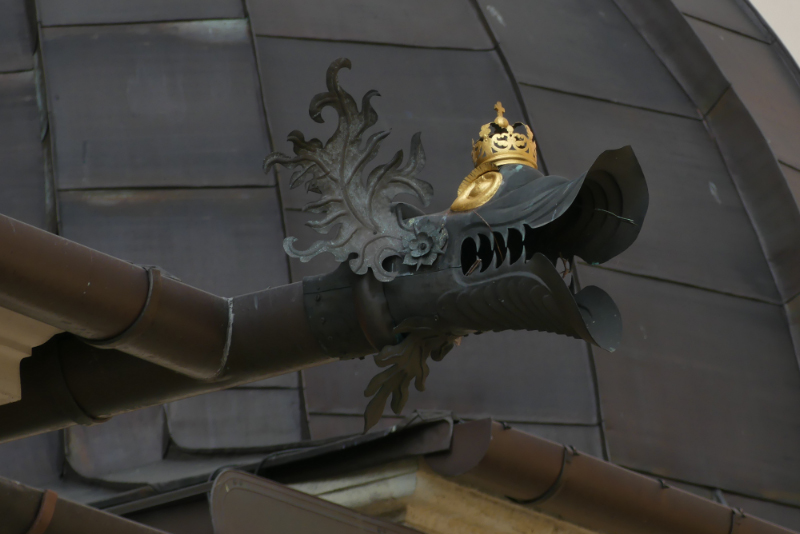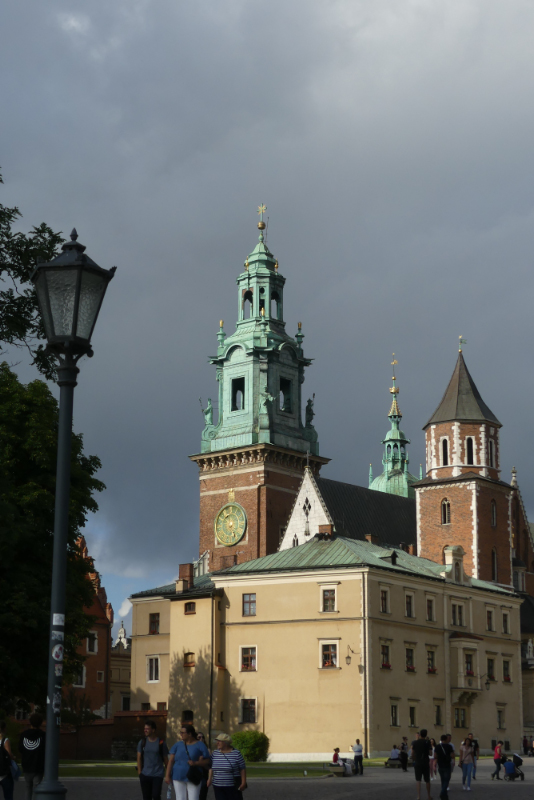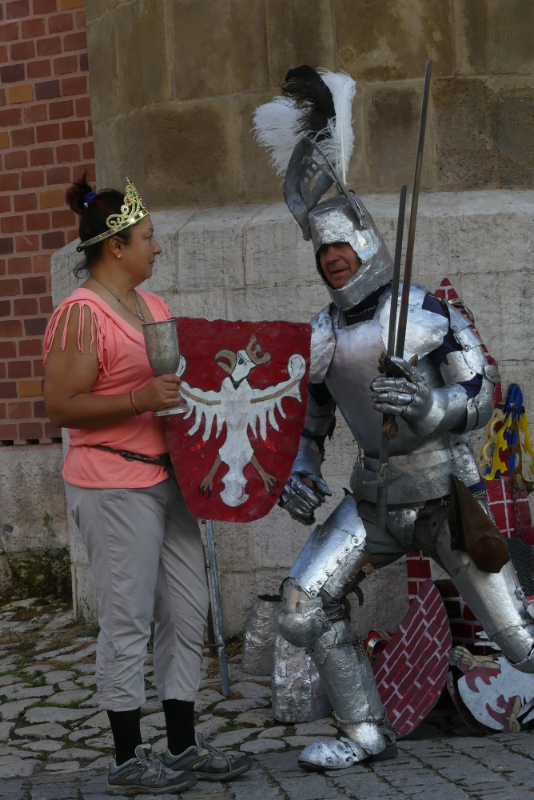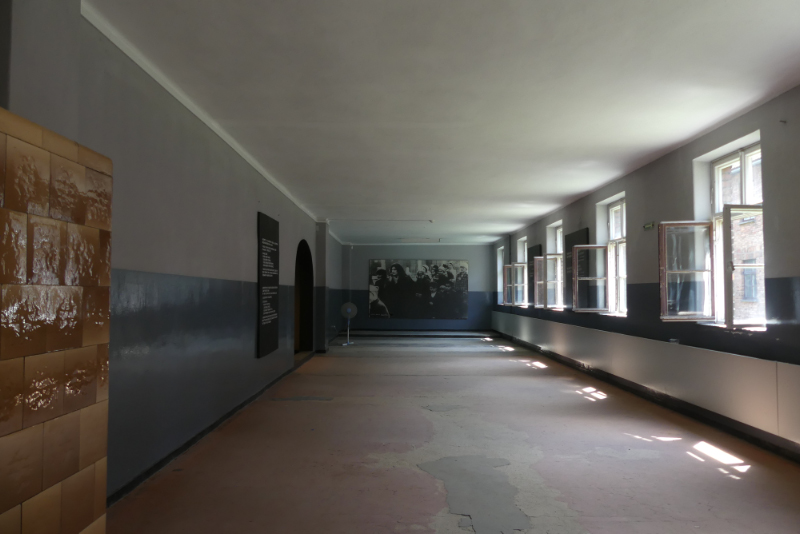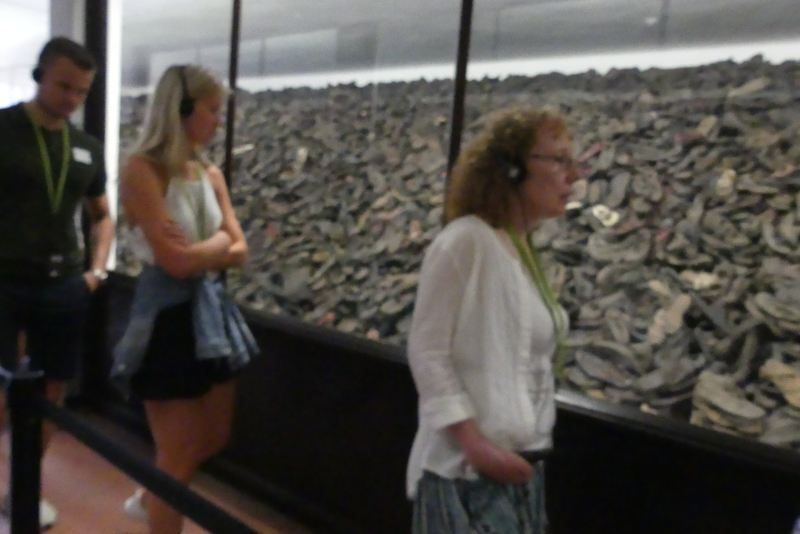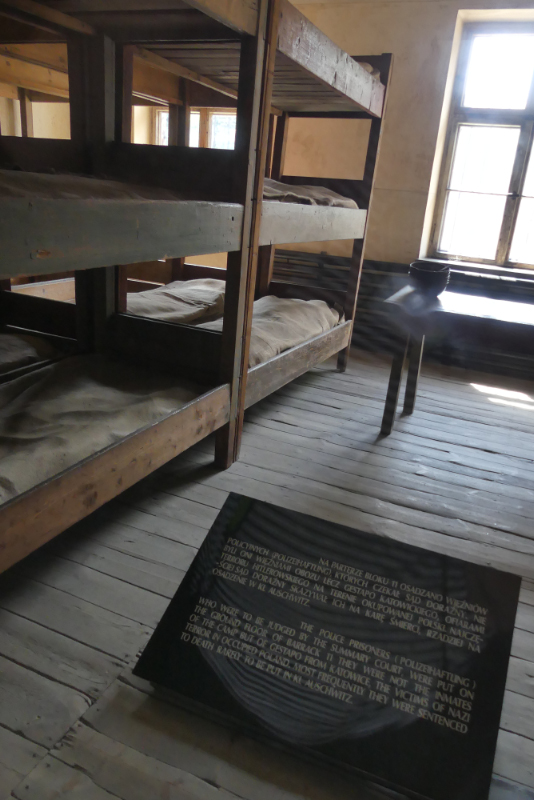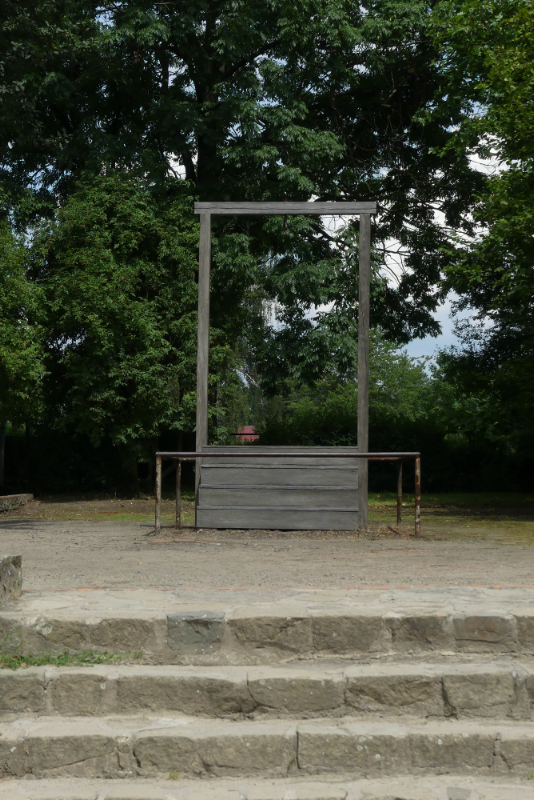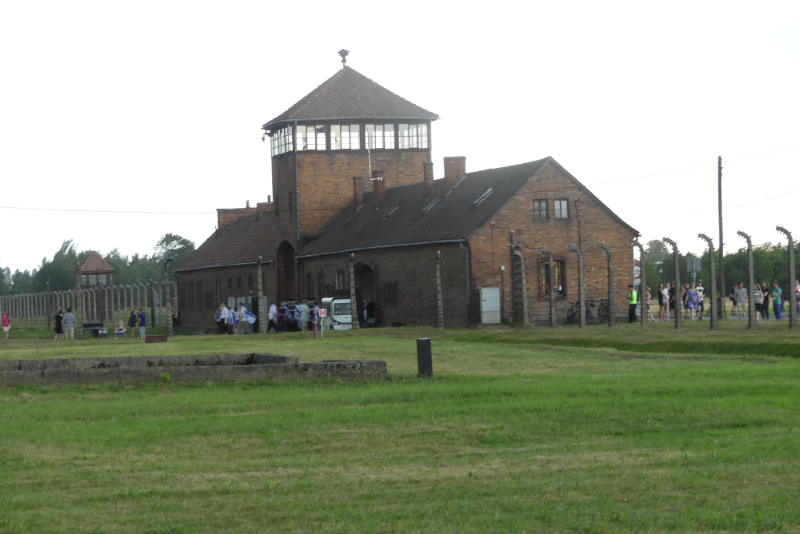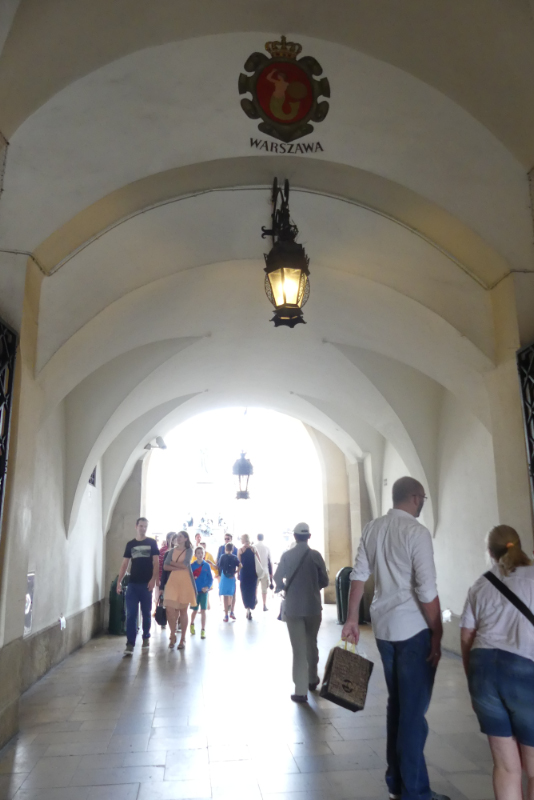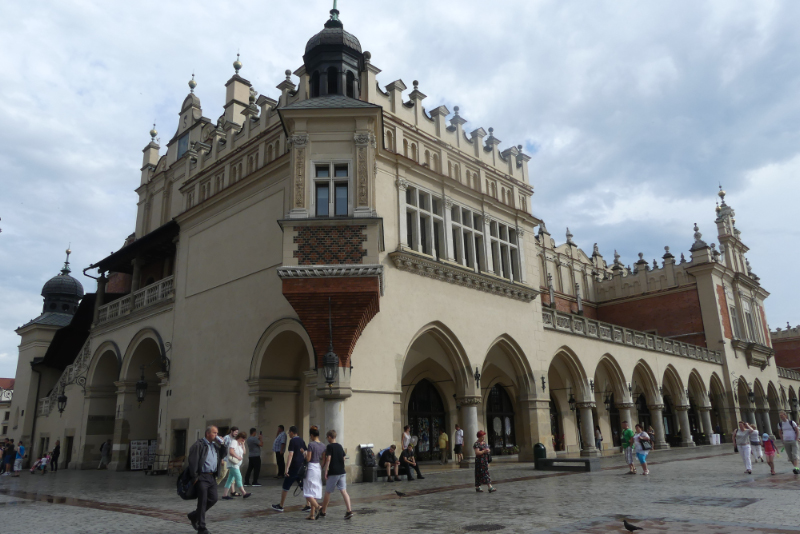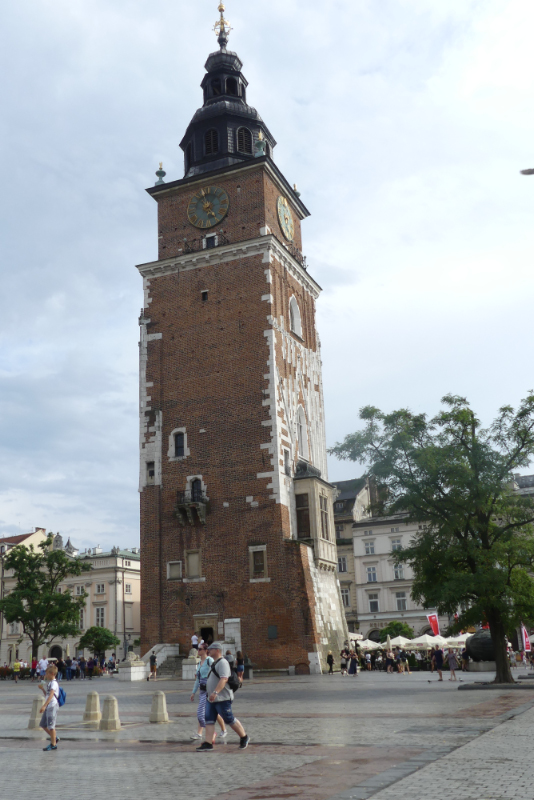Friday 21 to Monday 24 July
We reached Poland and the tourists were there.
We left Prodov in Slovakia for a 1.5 hour drive of 145km to Kraków. As we climbed the pass in the High Tatras the rain started, which slowed us down considerably. But in Poland we came across a massive road construction site and we came to a standstill. Our 1.5 hour journey took us nearly 4 hours of traffic, rain and fog.
The weather cleared in Kraków and we got out to survey the city. It is a popular destination. Most of the old town is vehicle free but we found ourselves negotiating pedestrians, bicycles and horse and buggies.
We walked up to Wawel Royal Castle as the sun played hide and seek. The inside tour options were closing but we were content touring the outside, around the cathedral and the lookout over the Vistula River.
After a drink on the main square we went closer to our hotel, which appeared less touristy, perhaps even a student area. A bar called ‘The Dog in the Fog’ attracted Bruce’s attention. The beer was OK as was wine and I had an interesting turkey casserole in a pot while Bruce tried a lamb sausage.
An Australian couple sitting at the next table, Pam and David Glover, turned out to know the Mifsud’s. There will always be someone who knows someone around the world.
Pete had messaged Bruce wanting some work done for a pitch. Hopefully he’ll manage this early and late in the day without interrupting our programme.
So after a couple of hours work next day we headed out to the Jewish quarter. First stop was the round market house in Plac Nowy – it is now an antique market, which Bruce scoured, hoping to find an old Russian Camera. No luck.
A walk around the area didn’t reveal much about the atrocities that occurred here during Nazi occupation, however the Old Synagogue had an interesting exhibition on Polish Jewish life. What surprised me most was the voodoo and superstition that accompanied the religious beliefs, such as a infant mortality linked to bad demons.
The devil is in in control of baby until he is circumcised. This is done a soon as possible on the eight day after birth.
When a boy reaches 13 years old he makes his bar mitzvah. A Girl makes her bat mitzvah when she is 12 years old. Then they are in control of their destiny, their choices. They can own land and marry. If a boy reaches 20 and is not married there is concern for him and a marriage matcher may have to help select a bride.
There was a penalty system and for those who disobeyed, such as missing synagogue, not paying taxes or assisting non-Jews and for women playing cards, first punishment was to be shamed with your name read out at synagogue. Second punishment was banned from synagogue for a week. In extreme cases the person would be banned from the synagogue for life. In that way they cannot participate in Jewish life.
Like many other religions, living within it’s confines was based on fear.
From there we visited Oskar Schindler’s Enamel Factory to see Kraków under Nazi Occupation 1939-1945. I really expected learn about the good work he had done, employing Jews from the ghetto and saving the lives of some of them. There was a room dedicated to his endeavours but his factory had been rebuilt as a haunting museum.
In fact the truth is that Oskar Schindler was a swindler and a crook, he flirted with women and had numerous affairs. He was an entrepreneur who arrived with the German invasion to help establish businesses under the occupation. He employed Jews during the German occupation because the General Government (GG) had decreed that Jews were not to receive wages. He fed them relatively well and had an internment camp built next to the factory to reduce their travelling time and therefore increase output. He paid a small sum to the GG for employing Jewish labour. Most of what he achieved was through bribery and his one aim in life was to make a lot of money.
He did, however slowly sympathise with the way the Jewish population were treated and in the end risked much to save some of them.
The rest of the exhibition was more confronting, explaining how the Germans had occupied Poland, a country that was still recovering from Austro-Hungarian occupation during WWI.
In the five years of occupation the Germans had added infrastructure such a trams, trains, water, electricity and modernised buildings. They established housing for the thousands of Germans who moved there, which was done by relocating both Poles and Polish Jews into smaller, more cramped quarters.
The Jews were labelled dirty, to be avoided. The main area where they lived accommodated about 3,000 people. When they were all relocated to this area the population rose to about 15,000. During this time numbers were culled – the elderly, the sick, the orphans. The strong people were sent to work in factories and to build roads. They were given the smallest quota of food coupons and were not paid, so attrition through starvation was high.
Jews were not the only race targeted, Romas and Sintis (gypsies) were also targeted as were homosexuals. Even the local Poles were targeted, from intellectuals to dissenters to jay walkers.
The exhibition took us through rooms with different sensory experiences, from cobblestones floors to gravel, wooden floorboards and even an undulating uncomfortable pliable surface. Room lighting and ambient noise changed to claim your concentration. Photos, stories and artifacts added to the experience.
When we had finally finished our tour I was shocked to realise I had spent three hours in there.
To add to the lesson of occupation we visited Auschwitz and Birkenau.
I had tried to book online a few days in advance but there were no tickets. Curiously when tickets were available it was generally just 1 ticket left for each session. I became suspicious and went looking for a day tour out of Krakow and had no trouble selecting a date and time to suit us. So what happens? The tour companies buy up all but one ticket to on sell. As it turned out a private tour would have cost €35 and the package cost €39.50 with no parking hassles and transport to and from Kraków.
Bruce missed out on a stay at a brew pub I had found near Auschwitz, but all ended well.
Auschwitz and Birkenau leave you numb. There is no joy in seeing the sites and learning the stories.
Whilst Auschwitz was a concentration and extermination camp, the purpose of Birkenau was purely extermination. Approximately 1,300,000 people are known to have gone through the camps however our guides admitted that it was likely many more who were not registered and not accounted for, as many records were destroyed when the Germans fled.
Of these it is estimated 1,100,000 were Jews. The others were Romas/Sintis, homosexuals, Soviet prisoners of war, Poles who had other political points of view, teachers, students, clerics.
It came on the back of the presentation we saw at Schindler’s Factory, where the Germans made a concerted effort to eliminate the Jews ‘The Final Solution’. But the way in which they carried out the plan is nothing less than horrifying. For example women who were destined for the death chambers were not fed for days while they were waiting, as there was no point wasting food on them. Lost children were sent to the death chambers. Some people were dead and cremated within three hours of arriving at the facilities.
The Jews were also singled out for verbal abuse and humiliation. For example they had to face the firing squad naked. The clothes would be reused.
There was a room full of human hair, removed from the dead before cremation. This was to be used to make carpets. There was a room full of shoes and another with combs and shaving brushes. All the possessions were sorted for reuse because of short supply during the war effort.
In this world of tumultuous politics, our visit to Kraków and the camps reminded us how important it is to respect your political right to vote and to respect man regardless of creed or race.
It was appropriate that as we left Birkenau a massive thunderstorm swept in with torrential rain to follow. It was a damp 1.5 hour ride back to Kraków on the bus.
But as we arrived, the rain lifted and the sun shone for our last couple of hours in Kraków.
e_header.jpg)




